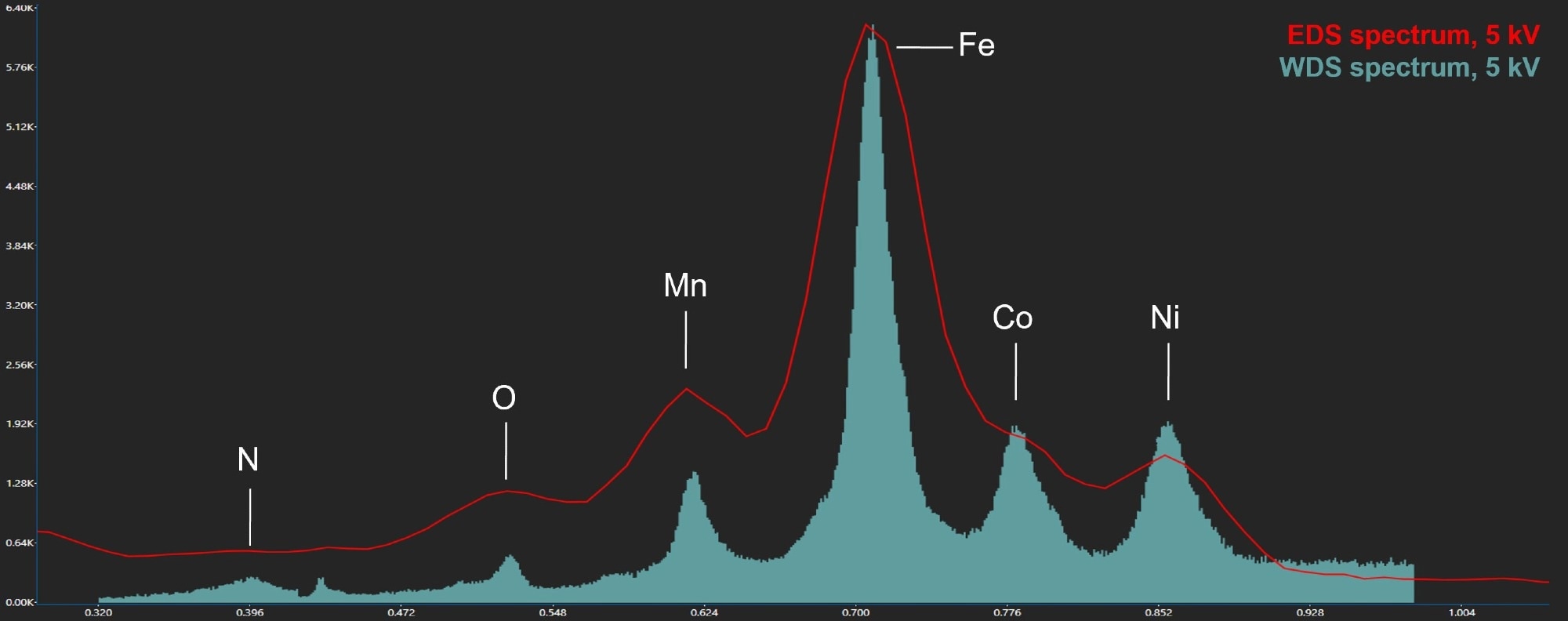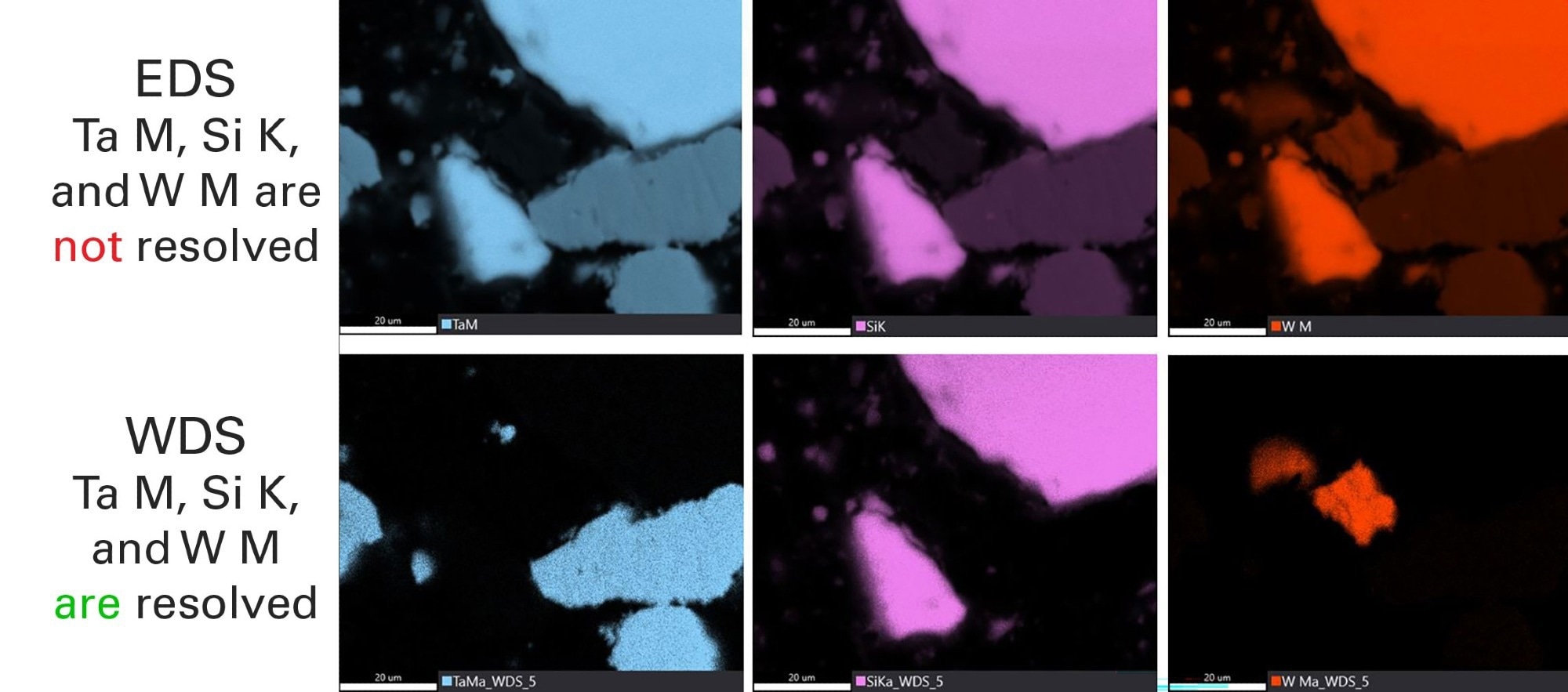EDAX Neptune is a materials characterization solution that combines the power and flexibility of energy-dispersive X-Ray spectroscopy (EDS) with the resolution, accuracy, and higher detection limits of wavelength dispersive spectroscopy (WDS). The two methodologies work together to quickly and accurately determine major, minor, and trace element composition, allowing users to make quick decisions. Each approach can be employed individually, or the data can be collected concurrently to provide a more in-depth insight into the sample composition.
Benefits
- By resolving EDS peak overlaps with up to 15× greater energy resolution than EDS alone, users can increase the accuracy of the results
- Reliable detection of minor and trace elements with increased spectral resolution and peak-to-background ratios (P/B)
- Provide results up to 8× faster than other systems by gathering more X-Rays utilizing the EDAX Lambda WDS spectrometers
- Provide exact quantitative data utilizing an established analytical algorithm
- Correlate with other methods to carry out the most thorough analysis possible
- To avoid operator error and analytical errors, capture EDS and WDS data concurrently

Figure 1. An overlay of EDS (red outline) and WDS (cyan color) spectra of an alloy sample at 5 kV. Image Credit: Gatan, Inc.
Lambda WDS spectrometers can achieve up to 15 times higher energy resolution than EDS detectors. This enables users to correct EDS analysis flaws and rectify EDS peak overlaps; WDS also increases the minimum detection limit by 10 times. Lambda spectrometers can identify minor and trace elements with improved P/B.
Improve the sensitivity to surface information in complicated material analysis by resolving transition metal L lines with a 10× improvement in depth resolution. Neptune improves the analytical capabilities of all SEMs by offering better contrast maps for hard-to-see elements, identifying trace elements and elements that are difficult to view with EDS alone, and delivering up to 8× higher P/B than Rowland’s Circle spectrometers.
Neptune eliminates the requirement for “expert-only” tools and training. It enables users to bring electron probe microanalyzer functionality in-house. Users can collect findings immediately, minimizing costly delays in analysis and decreasing the need to buy expensive or highly specialized tools.

Figure 2. EDS (top) and WDS (bottom) maps of the Si-W-Ta sample. The WDS maps resolve the artifacts due to Ta M, Si K, and W M peak overlaps in the EDS maps. Image Credit: Gatan, Inc.